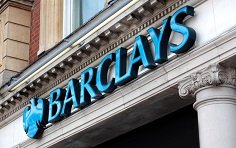ii view: brighter dividend prospects for Barclays
Its shares are down nearly 40% in 2020, but lower bad debt provisions might signal a turn in fortunes.
26th October 2020 15:49
by Keith Bowman from interactive investor
Its shares are down nearly 40% in 2020, but lower bad debt provisions might signal a turn in fortunes.

Results for the third-quarter to 30 September 2019
- Total income down 6% to £5.2 billion
- Pre-tax profit up 366% to £1.15 billion
- No dividend payment
- Capital cushion of 14.6% (13.4% in Q3 2019)
Chief executive James E Staley said:
"In this historically challenging year for our customers and clients we have continued to provide huge support to help people through the social and economic impact of the Covid-19 pandemic. This remains a priority, alongside maintaining the financial integrity of the firm and keeping our colleagues safe.
“Our CET1 ratio increased 40bps in the quarter to 14.6%, more than 300 basis points above our regulatory minimum. The Board recognises the importance of capital returns to shareholders and will provide an update on its policy and dividends at full year results."
ii round-up:
Barclays (LSE:BARC) operates two divisions - Barclays UK and Barclays International.
Barclays UK includes personal banking, which generates just over half of the division’s income. The balance is split relatively even between Barclaycard consumer UK and UK business banking.
Barclays International includes both its Corporate and Investment Banking (CIB) and consumer, cards, and payments segments in Europe and the US. Markets or trading-related operations generate around 45% of revenues; consumer, cards, and payments another 23%, and the balance is split evenly between banking fees and corporate banking.
For a round-up of third-quarter results, please click here.
ii view:
Like rivals, Barclays has looked to become a simpler, more focused bank since the financial crisis. Unlike rivals, the bank has kept much of its markets/investment banking operations. Corporate and Investment Banking income rose 24% to £9.8 billion for the nine months to end of September versus last year and which also includes the two pandemic-hit quarters. Like US bank JPMorgan (NYSE:JPM), revenue from market operations, including bond and equity trading, rose sharply – up 52%.
More broadly, bad debt provisions reduced, suggesting that management is comfortable for now with its prior provisioning in relation to the pandemic. And, despite caution from the UK regulator, a 9% increase in the capital cushion year-over-year to 14.6% means that Barclays management is now looking to review its shareholder returns policy come the 2020 full-year results.
For investors, uncertainty regarding both the pandemic and Brexit cannot be ignored. Total group net interest income retreated by 16% from the third quarter of 2019, while further beneficial volatile trading for its markets business is not guaranteed. That said, these results beat analyst expectations, operations are diverse, and a capital cushion comfortably above its regulatory required level is now raising the prospect of a resumption in dividend payments. In all, while some caution remains sensible, Barclays' post-financial crisis vision to retain its investment bank/market operations is paying off.
Positives
- Diversity of business and geographical location
- Profit before tax for its CIB up 25% to £3.2 billion
Negatives
- Income for UK division down 12% year-to-date compared to 2019
- Credit provisions up 32% compared to Q3 2019
The average rating of stock market analysts:
Strong buy
These articles are provided for information purposes only. Occasionally, an opinion about whether to buy or sell a specific investment may be provided by third parties. The content is not intended to be a personal recommendation to buy or sell any financial instrument or product, or to adopt any investment strategy as it is not provided based on an assessment of your investing knowledge and experience, your financial situation or your investment objectives. The value of your investments, and the income derived from them, may go down as well as up. You may not get back all the money that you invest. The investments referred to in this article may not be suitable for all investors, and if in doubt, an investor should seek advice from a qualified investment adviser.
Full performance can be found on the company or index summary page on the interactive investor website. Simply click on the company's or index name highlighted in the article.